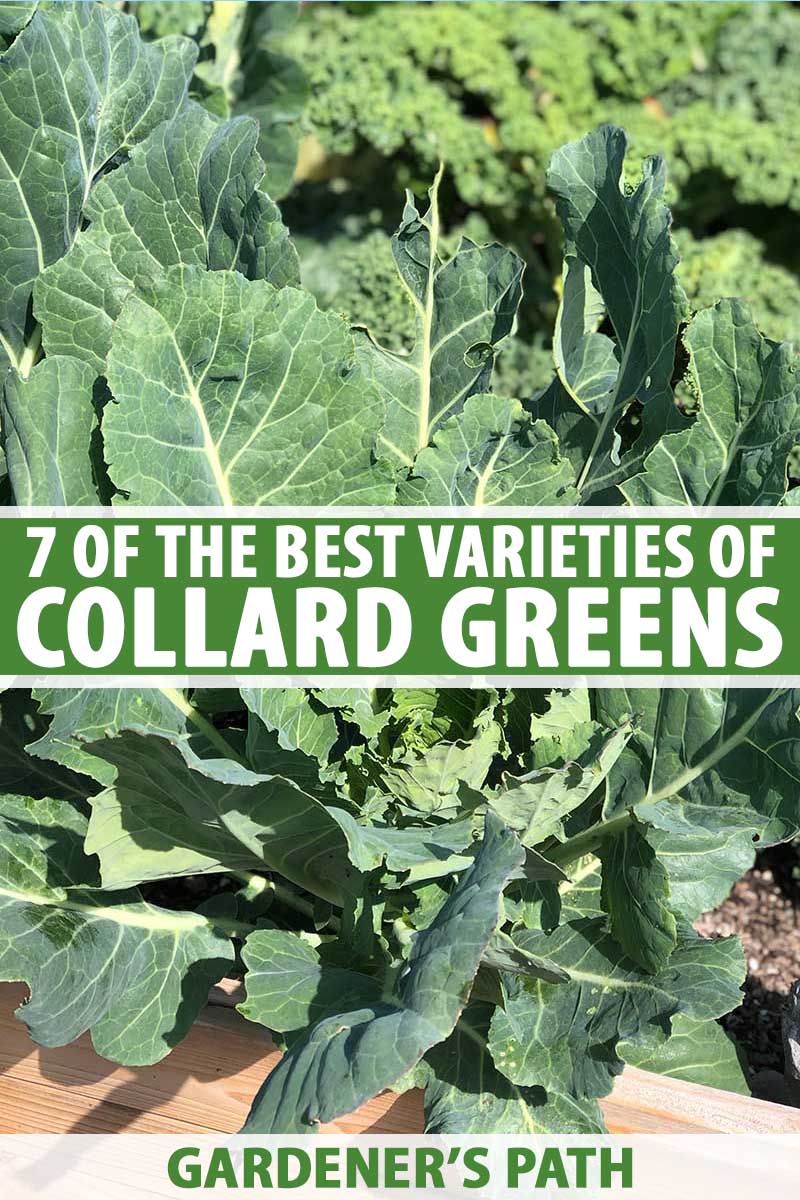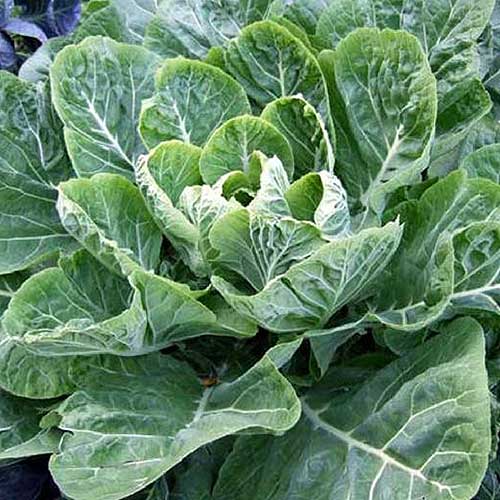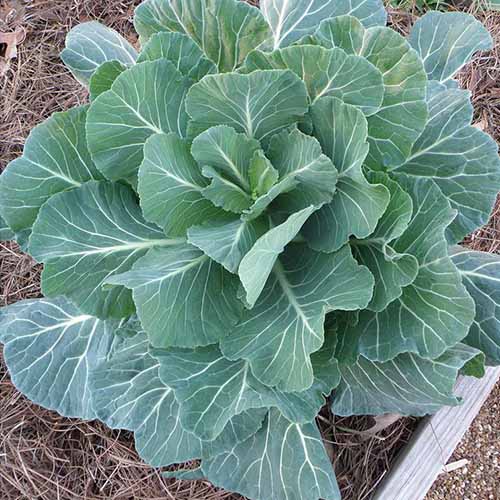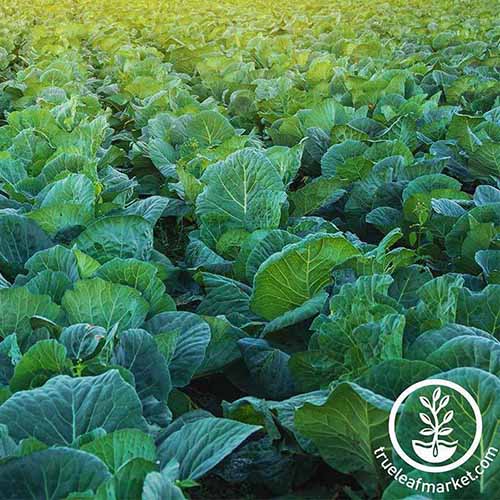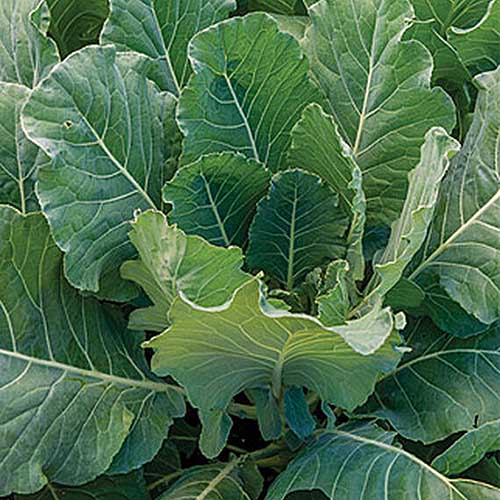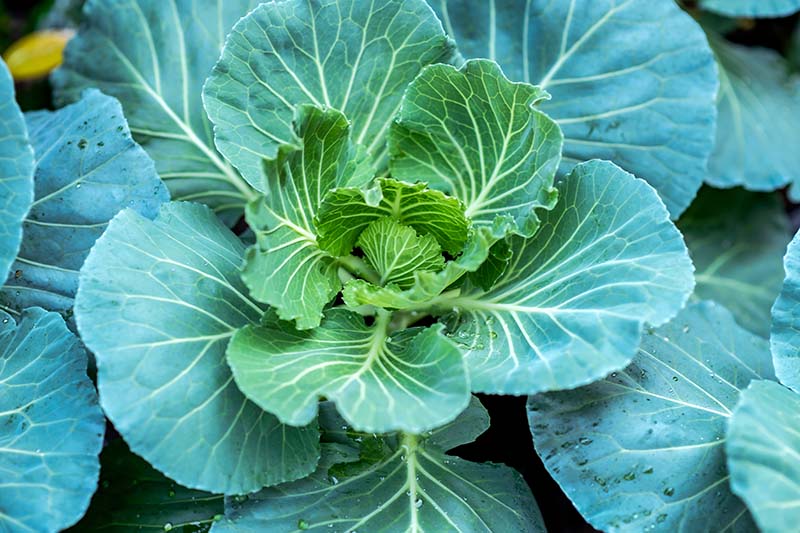Or perhaps you’ve tried them raw, in place of a tortilla to hold your favorite fillings in a vegan wrap. Whatever your pleasure, these broad-leafed vegetables are tasty and nutritious, and they deserve a place in your garden. But did you know that there are several different cultivars to choose from? We link to vendors to help you find relevant products. If you buy from one of our links, we may earn a commission. Let’s take a look at some of the top varieties, favorites among gardeners who love their leafy greens. With large, dark blue-green leaves that are a bit crumpled, this type is slow to bolt. And after picking, harvests can be stored in the fridge longer than other types, while maintaining a tasty texture.
‘Champion’ Disease and frost resistant, this open-pollinated cultivar is also slow to bolt. Seeds are available from Eden Brothers.
2. Ellen Felton Dark
An heirloom cultivar that dates back to at least 1935, this type has dark green, slightly crumpled, tender, and flavorful leaves. This type is known to have been grown originally by a gardener named Ellen Felton, of Beaufort County, North Carolina. Her son Harrell carried on the tradition of growing this crop and saving seeds each year, and he donated some to the USDA in 2003. Plants have a mature height of 15-22 inches with a spread of 22-35 inches. Plants mature in 60-80 days.
3. Georgia
Also known as ‘Georgia Hybrid’ or ‘Georgia Southern,’ this heirloom cultivar is a favorite among growers. And the flavor only improves with a touch of light frost. Plant your first crop in the spring, and sow again in summer for a late-season harvest. Plants with a mounding habit and smooth, slightly wrinkled leaf texture mature in 65-70 days, with a 12-inch spread and a height of 24 to 36 inches. Leaves are juicy and dark blue-green, and suitable for fresh eating, freezing, or canning.
‘Georgia’ This type is tolerant of both heat and cold, humidity, and poor soil conditions, ‘Georgia’ is also resistant to light frost, and slow to bolt. It’s best suited to warmer climates in USDA Hardiness Zones 6 and up. Seeds are available from Eden Brothers, or you can find six-packs of seedlings ready for planting from Bonnie Plants via Home Depot.
4. Morris Heading
Unlike the other cultivars on this list, all loose-leaf varieties, ‘Morris’ is a heading variety that produces loose heads of leaves instead. These are typically shorter than those produced by most types, and plants are more compact. Known for their tender texture, leaves are medium green, and a bit crumpled. Expect a mature height that maxes out at about 36 inches in full sun conditions.
‘Morris’ Plants reach maturity in 75-85 days, and they are tolerant of heat and cold. This type is suited to Zones 3-12. Seeds are available from True Leaf Market, or purchase garden-ready seedlings in packs of six from Home Depot.
5. Old Timey Blue
A unique cultivar with added ornamental appeal, this type, sometimes called ‘Alabama Blue,’ boasts pale blue-green leaves with purple stems and veins. Ralph Blackwell, a gardener in Alabama, donated saved seeds from his family’s plots to the Seed Savers Exchange in 1989. Prior to that, this heirloom type was grown by Blackwell’s family for at least 100 years. Suitable for canning as well as sauteing and other preparations, plants have an upright growth habit and reach a height of about 24 inches at maturity, in 60-80 days.
6. Tiger Hybrid
A high-yielding cultivar with an upright growth habit, ‘Tiger Hybrid’ plants have large, thick, and slightly savoyed leaves with a green-blue hue. Known for its satisfying flavor, ‘Tiger Hybrid’ can be planted as a cut-and-come-again crop for repeat harvests, with leaves that mature in about 55-60 days.
‘Tiger Hybrid’ Expect mature heights of 20-25 inches and a spread of 22-25 inches. Seeds are available from Burpee.
7. Vates
Best suited to Hardiness Zones 3-12, this high-yielding heirloom cultivar produces dark green, shiny, and slightly crumpled leaves with yellow stems. With a mounding habit, plants reach about 34 inches in height and they like to spread.
‘Vates’ Disease and frost resistant, ‘Vates’ matures in about 75-85 days. Plants are slow to bolt. Seeds are available at Eden Brothers.
Grow Your Own Greens
Ready to grow your own flavorful and nutritious leafy greens? Whatever the growing zone, with the proper care, collards are an annual edible that can flourish in your garden. Collard seeds can be started indoors, or sown directly in the garden. Plant several sets of seeds in succession or cut and come again for multiple harvests throughout the season, and plan for exposure to a light frost late in the season in cooler zones for the best flavor.
Before you know it, you’ll be sitting down to plates filled with homegrown collard wraps, savory sides, delectable soups, and canned goods made with this delectable and nutritious vegetable. Which type will you add to the veggie patch this year? Do you have a favorite cultivar that wasn’t mentioned here? Feel free to drop us a line in the comments! And for more information on growing your own collard greens in the vegetable garden, give these guides a gander next:
How to Grow Collard Greens, a Taste of Southern Culture Tips for Growing Collard Greens in Winter What Are the Health Benefits of Homegrown Collard Greens?
© Ask the Experts, LLC. ALL RIGHTS RESERVED. See our TOS for more details. Product photo via Bonnie Plants, Burpee, Eden Brothers, Home Depot, and True Leaf Market. Uncredited photos: Shutterstock. With additional writing by Tori Vallana.

